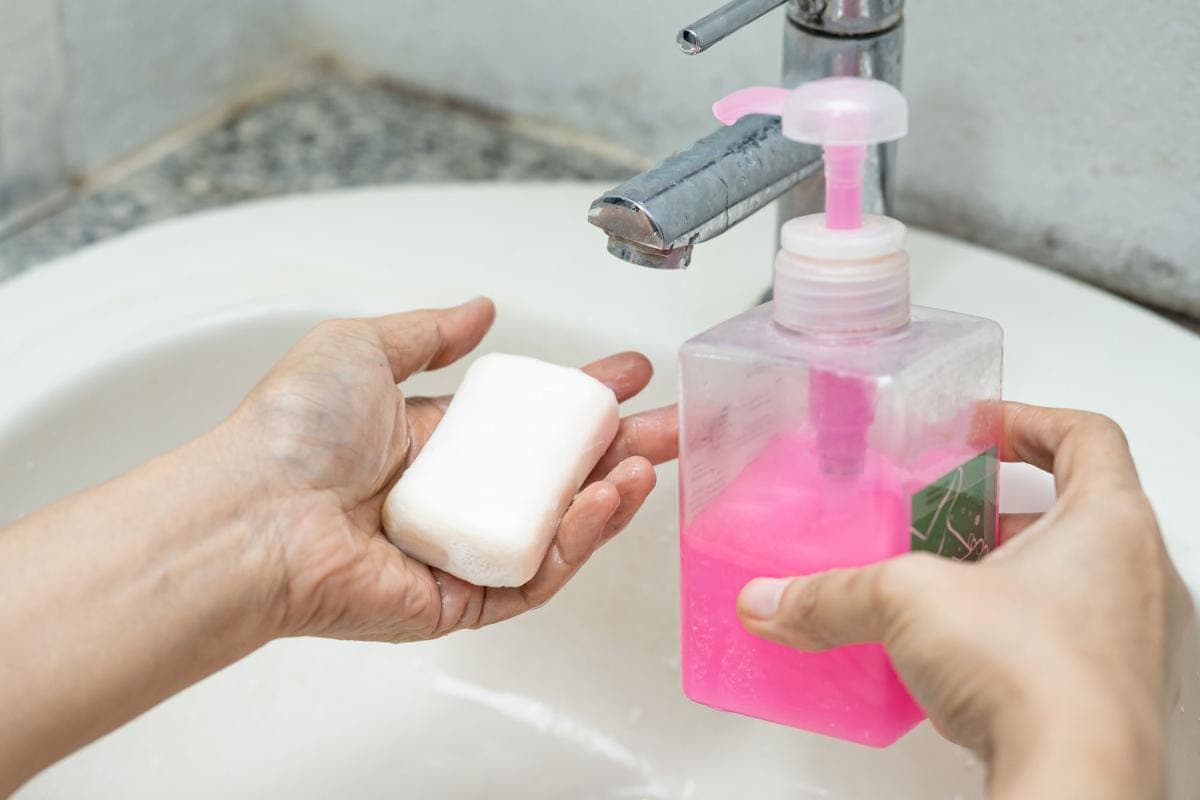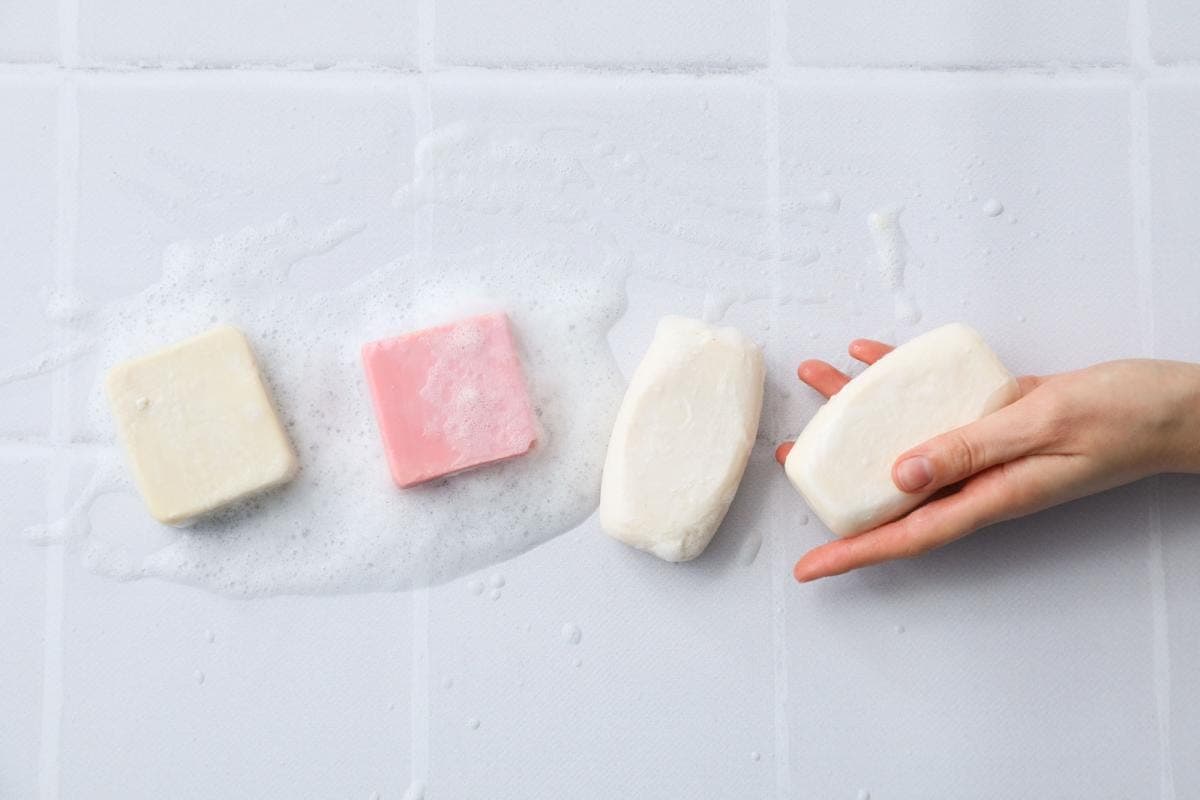Skincare, Trends & Opinions
Liquid Soap or Bar Soap Which Cleans Up Best
If you click on links we provide, we may receive compensation.
The next time you stand in a store aisle surrounded by gleaming dispensers and neatly wrapped bars, remember this interesting figure: the global liquid soap market is on track to top USD 32 billion by 2030. Liquid formulas have gained a firm grip on household sinks, yet bars have never vanished from bathroom shelves. I’ve spent years testing both forms as a formulator and a long-time hand-washer, and the question clients keep asking is simple: Which one is better? The answer is layered, so let’s wash our hands of assumptions and look at the evidence.
Origins of the Debate
Commercial bar soap traces its roots to fat-and-lye mixtures sold in ancient marketplaces, while modern liquid soap emerged only in the 1970s after chemists perfected stable surfactant blends that flow from a pump. That time gap partly explains why many of us still see bars as “old-fashioned” and liquids as a symbol of progress. Yet progress can cut both ways. Liquid soap’s silky lather feels luxe, but its plastic bottle weighs on landfills. Meanwhile, the humble bar has traded rough textures for sophisticated formulations enriched with shea butter or glycerin. In other words, the fight is closer than surface impressions suggest.
Skin Health and Hygiene
Both formats rely on surfactants that break the bond between skin oils and pathogens, so each can remove germs effectively when used for the recommended twenty-second wash. Where they differ is pH. Traditional bars hover around 9 or 10, an alkaline level that can disrupt the skin’s acid mantle and leave tightness behind. Liquid soaps often use milder synthetic detergents balanced closer to skin’s natural pH near 5.5, helping sensitive faces feel calmer after rinsing. That said, many newer bars now incorporate buffering agents and humectants, narrowing the gap. If your skin flushes easily, a truly mild liquid cleanser might still feel friendlier, but a thoughtfully formulated bar can perform just as gently.
Environmental Footprint
Here’s where the data grows decisive. A Swiss life-cycle analysis cited by The Washington Post found that a simple bar of soap cuts greenhouse emissions by roughly one-third compared with liquid soap. Packaging tells part of the story: a pump bottle requires nineteen times more energy to produce than a cardboard-wrapped bar. Transportation matters too, because liquid soap is mostly water, which means extra weight on every truck. Manufacturing disparities add to the imbalance; the same Swiss research team calculated that making synthetic detergents for liquids uses five times more energy than crafting a fat-and-lye bar.
Still, bars have their own environmental catch. People tend to scrub longer, using about 40 percent more running water. Even so, the study concluded that a bar’s lean packaging and concentrated formula outweigh the added rinse time, leaving it the greener choice overall. For households counting carbon, switching from a bottle to a bar offers a modest but real climate win.
Cost and Convenience
Walk through any drugstore: a budget bar costs a fraction of a fancy liquid. That gap persists because bar production relies on inexpensive oils and saponification, while liquids require extra thickeners, preservatives, and multi-part containers. Supply-chain analysts at Future Market Insights note that price remains the main reason shoppers on tight budgets favor bars. Yet convenience nudges many consumers the other way. Pumps feel tidy, especially near kitchen sinks where raw-food residue invites cross-contamination. A 2024 survey by The NPD Group reported that about 70 percent of consumers upgraded hygiene habits after the pandemic and now view liquid formats as more sanitary. In offices, hospitals, and hotels, that perception keeps liquids flowing.

Travel and Storage
Solid bars breeze through airport security without hogging limited “liquids” bag space, and they never leak over luggage. They also last longer ounce-for-ounce because water dilution happens only during use. On a damp shower shelf, though, an unprotected bar can melt away quickly. Liquids avoid that waste, thanks to stabilizers. They also share easily among multiple users without direct skin contact – handy in large households. Ultimately, your lifestyle will dictate which practicality prevails.
Sensory Experience and Wellness Angle
Scented hand washes with microbubbles deliver spa vibes after a stressful commute, and marketers lean into that luxury. Bars fought back, adding botanical infusions and artisanal swirl designs. From a sensory standpoint, neither format owns the pleasure category outright; it rests on formulation choices. What about perceived germ transfer when several people touch the same bar? Decades of studies show bacteria do linger on bar surfaces, yet they rarely transfer in significant numbers during washing because the very act of lathering flushes organisms down the drain. In short, hygiene fears around shared bars are largely psychological.
Sustainability Innovations
No product stands still. Refillable aluminum dispensers for liquid concentrates cut plastic. Meanwhile, bar makers press shapes with finger grips to reduce slippery waste and offer dissolvable paper wraps. Some forward-thinking companies now sell concentrated liquid capsules that dissolve in reusable pumps, narrowing the gap between forms. Others extrude bars from upcycled cooking oil, giving waste fat a second life. The soap aisle is turning into a lab of eco-experiments, and that’s good news whichever side you pick.

FAQs
Q: Does bar soap really dry skin more than liquid soap?
A: Alkaline bars can strip sebum, yet modern surgras (super-fatted) bars add one to two percent extra oils, replacing what rinses away. For extremely dry or eczema-prone skin, a pH-balanced liquid free from sulfates may still feel better, but the margin is thinner than it was a decade ago.
Q: Which lasts longer under normal household use?
A: Weight-for-weight, a typical 4-ounce bar yields as many hand washes as an 8-ounce bottle, provided you keep the bar dry between uses. Once standing water softens the bar, longevity plummets, so a slotted dish extends life considerably.
Q: Are antibacterial liquid soaps safer?
A: The US Food and Drug Administration banned triclosan and similar ingredients from over-the-counter soaps in 2016, citing marginal benefits and potential resistance risks. Ordinary soap – bar or liquid – removes germs mechanically, which suffices for everyday hygiene.
Q: What about sensitive noses?
A: Liquids can mask strong surfactant odors with complex fragrance blends, though unscented options exist in both categories. If you’re scent-averse, look for “fragrance-free” labels and patch-test; some bars rely on essential oils that still carry aroma.
Q: Which is better for acne-prone backs and chests?
A: Many dermatologists favor liquid cleansers containing salicylic acid because acids stay evenly suspended in a gel. A medicated bar can work too, but active ingredients may rinse away faster unless you allow brief contact time.
The Bottom Line
So, is one format objectively superior? For raw sustainability, a minimal-ingredient bar edges ahead, especially if you let the tap run only long enough to build a quick lather. For pH-sensitive skin or households craving pump-top speed, a thoughtfully formulated liquid makes sense. Personal preference – texture, aroma, bathroom aesthetics – tips the balance for most of us. And with both markets racing toward greener formulas and smart refill systems, the best choice today might look different next year. My advice: experiment. Keep a bar on standby for travel and low waste days and reach for a gentle liquid when your skin feels fragile. Clean hands and a clear conscience can coexist.




